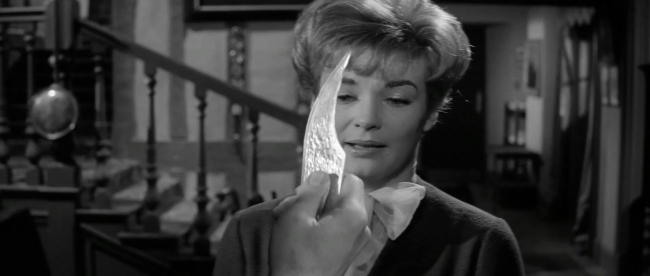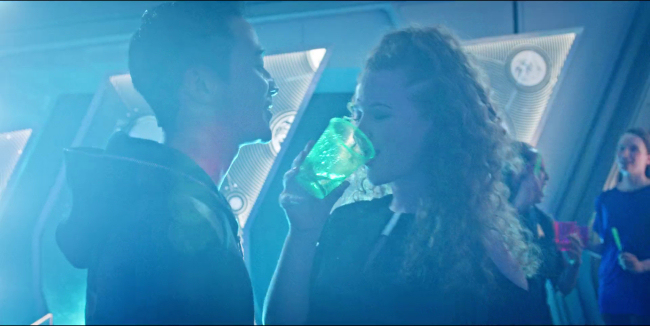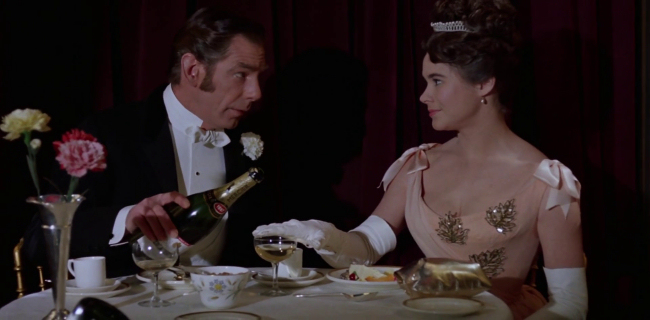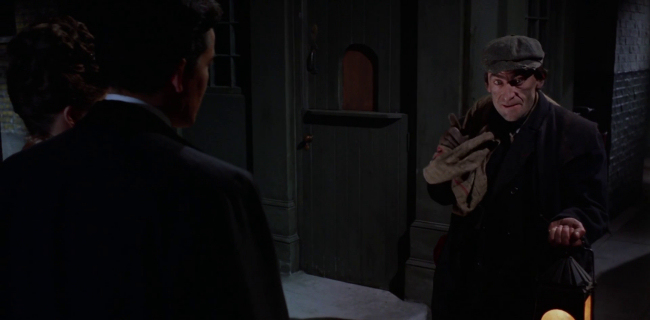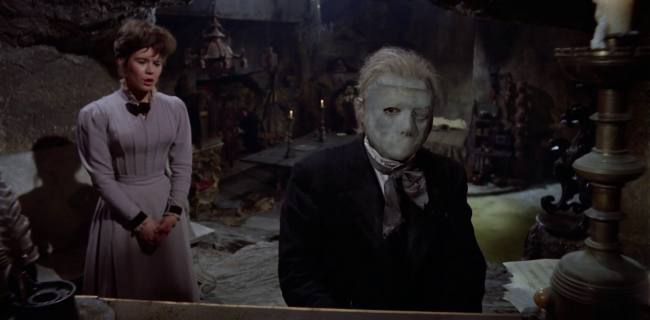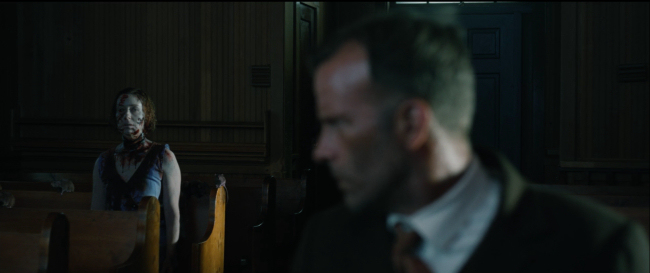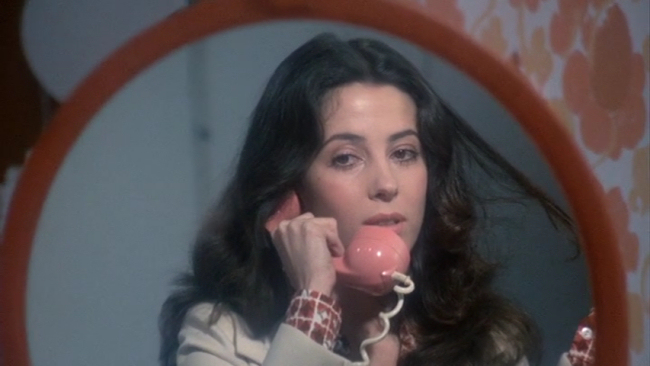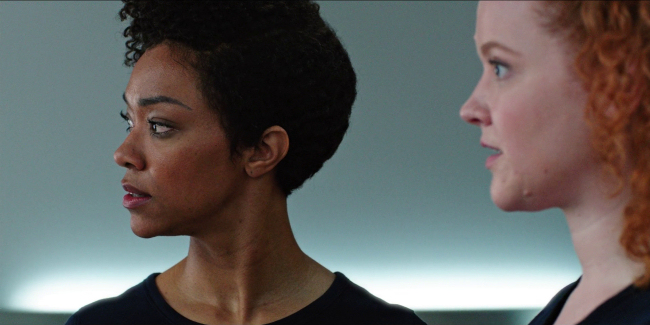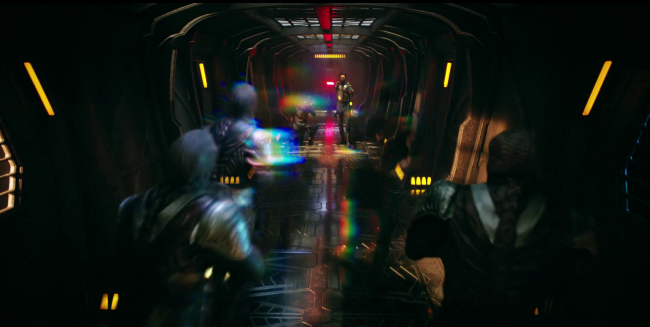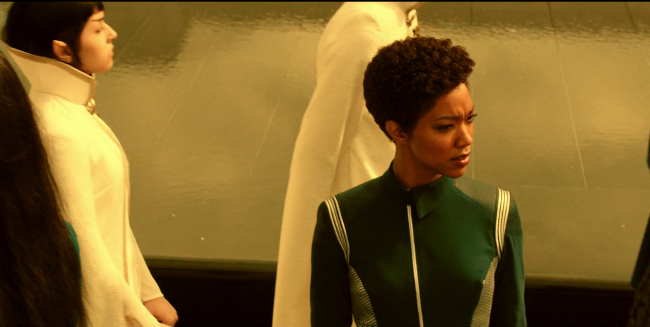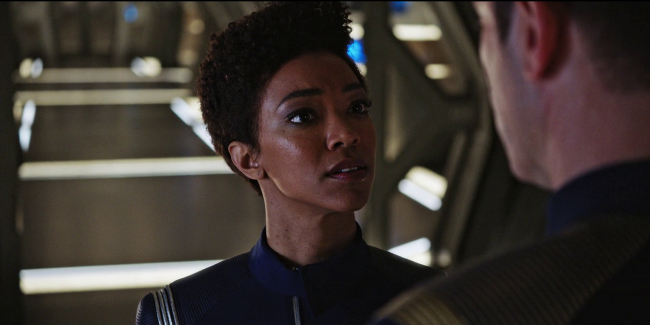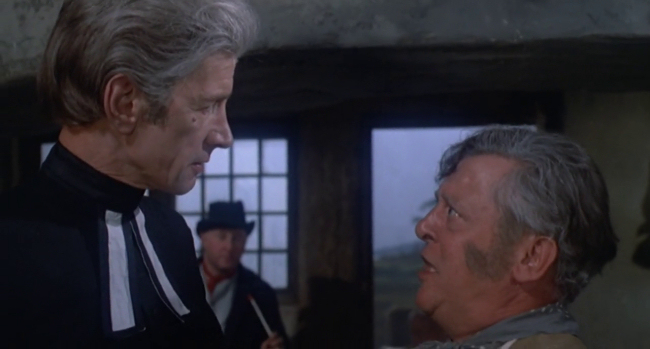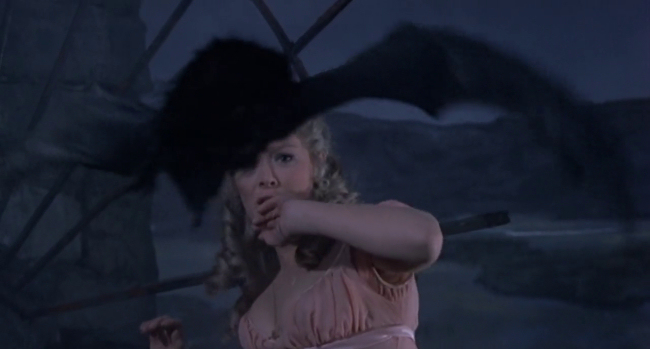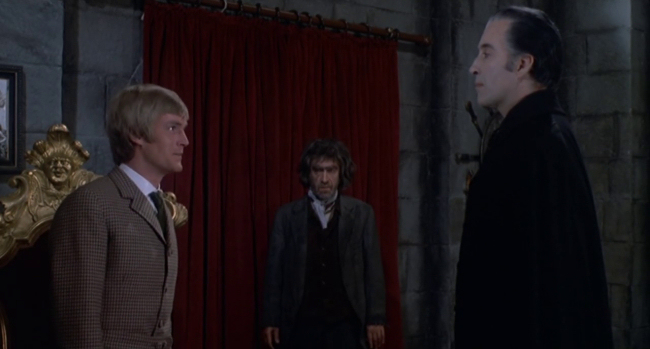
A particularly entertaining new episode of The Orville last night, "Majority Rule", provided suspense, insight, and satire based on the idea of social media run amok. Like most episode concepts on The Orville so far, this one has plenty of precedent--I was reminded of the Star Trek: The Next Generation episode "Justice", the Doctor Who serial Vengeance on Varos, and the Dave Eggers novel The Circle. But unlike those stories, the Orville leans more into the comedic half of its comedy/drama premise providing some of the best laughs on the series yet.
Spoilers after the screenshot

The concept of a world with parallel evolution, where the species and civilisation on an alien world resembles our own, is an old one, often used on Star Trek without any idea of convincing the audience that it's plausible (despite the TNG episode "The Chase" coming up with an explanation for it). The point was to provide a scenario where the futuristic crew could interact with a version of Earth's past where some aspect was exaggerated, whether it was the idea that the Nazis had won World War II or that the Roman Empire was still around in the 20th century. Hopefully audiences aren't too wise ass to accept the concept here, especially since the episode is lampooning wise asses.

I was also reminded of the Next Generation episodes "First Contact" and "Who Watches the Watchers" and, like the latter example, "Majority Rule" is about anthropologists on the planet who have gotten into trouble. The crew of the Orville are tasked with finding and saving them despite the fact that very little is known about the culture--presumably that's why the anthropologists were there. One could knitpick and say the Orville's level of technology should allow them to send down cloaked probes or something but then you'd be shifting the subject of drama and comedy in the episode into the realm of exposition so such knitpicks miss the point of this kind of fantasy.

In a funny conversation about the appropriate level of grinding one should expect in a dance partner, John (J. Lee) obnoxiously demonstrates his technique on a statue of a folk hero, netting him thousands of "down votes" when the locals of course catch him on camera. This turns out to be a real problem because ten thousand down votes mean he'll be lobotomised.

The episode in a way picks up where The Circle left off. You might be unaware of the fact that a film version of The Circle was released this year starring Tom Hanks and Emma Watson. "What?" you say. "Did you just make that up?" No, no, it was a real movie--see, here's the Wikipedia entry. John Boyega and Karen Gillan were in it, too, and it was Bill Paxton's last film. How did you miss it? Probably because, if you were one of the few who saw an ad for it, it was too generic for your brain to register. But the studio sure didn't seem eager to promote it. It's an unremarkable film, curiously with a message in almost direct ideological opposition to its source novel which criticises the potential corrosive culture that might be created by social media run rampant. The novel and film end just as the kind of voting seen in "Majority Rule" are about to take over the world but the book spends a lot more time exploring the psychological impact on characters than "Majority Rule".

But the episode does have a few moments that explore what this environment is like for a variety of people. One woman can't even order a cup of tea because the cafe doesn't serve people with over 5,000 down votes. She's forced to explain to the barista that it's because of mistakes she made in her youth--in this world, even the barista is an arbiter on your life history. A nice scene on the Orville later has that barista, Lysella (Giorgia Whigham), discussing her culture with Ed (Seth MacFarlane), Bortus (Peter Macon), Isaac (Mark Jackson), and Alara (Halston Sage). It's a polite conversation that lets anyone watching in on the problem in what Ed calls "absolute democracy"--Lysella doesn't sound crazy when she asks what about all the voices that go unheard in a merely representative democracy. Bortus and Isaac offer the statements "Voices should be earned" and "I think you're confusing opinions with knowledge" politely enough but it would have been nice if they'd elaborated more. Anyone criticising the show for not being original here, though, ought to be reminded that some things definitely bear repeating.

In one of the funnier parts of the episode, a man angrily approaches Alara because she's inadvertently worn a hat belonging to a culture or belief system she doesn't know about. His level of anger at her innocent cultural appropriation is hilarious and, unsurprisingly, some reviewers have no sense of humour about it, including a reviewer from The A.V. Club who puts the blame on Alara for incident. So while the message of "Majority Rule" might not be new, it's certainly not obsolete.



